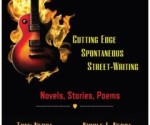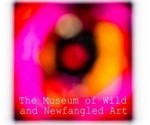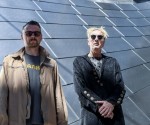We Talk with Film Director and Photographer Jerry Schatzberg

Faye Dunaway (1967). Photo credit: Jerry Schatzberg
Bronx-born Jerry Schatzberg has taken some of the most memorable images, not only in his groundbreaking 60s fashion spreads and portraits of icons including Andy Warhol, Edie Sedgwick, the Rolling Stones and Catherine Deneuve. As an amazing film director with a diverse body of work that highlights troubled outsiders, drug addicts and misfits at the edges of American society, he has become one of the inexplicably overlooked treasures of 70s New Hollywood film-making. His riveting debut Puzzle of a Downfall Child, starred Faye Dunaway, depicting the rise and ruin of a supermodel who suffers a shattering breakdown. He discovered Al Pacino for his follow-up Panic in Needle Park, the tale of a couple of New York junkies negotiating the mean streets during a heroin drought. His third, Scarecrow, was recently shown again after its original release. Following two drifters who form a bittersweet friendship as they hitchhike across the mid-west, it captures arguably the best performances by Al Pacino and Gene Hackman on celluloid. He gave us a rare interview about not only his films but his upcoming projects, and at the age of 85 he is still going strong having recently show his work at the Miami – New York Art Fair.
Many people know you as a wonderful director, but you are a gifted photographer. Can you talk about the difference between working with a still camera and a movie camera?
Working with a still camera, you only have one image with which to produce a story or to give the photograph substance. With a movie camera you can move and follow your subject or you can set your camera in a fixed position and have your subject perform for the camera. You can use tools like zooms, pans, and dolly shots as a visual vocabulary; if you want to shock somebody, for example, you might use a fast zoom as opposed to a slow zoom. They are also different In terms of quality of light and composition; with still photography you compose and light for your subject while in movies you have to light the entire set with your subject moving around in it. If the subject doesn’t hit their mark it might produce something unexpected. So you can say the two forms are like distant cousins raised in different parts of a country and for the most part they are different but you will find some similarities.
Those magnificent photos you did of Faye Dunaway, what was is like shooting her for the first time?
I was introduced to Faye while she was making her first film, The Happening. Esquire asked me to go down to Florida to photograph this new young actress. I found her to be charming and very cooperative. We started the shooting session and in the middle she began to cry. I don’t know why and she didn’t know why either. I thought I may have offended her in some way, but that wasn’t the case. I think it has something to do with the fragile nature of an actor. It has happened to me with other subjects. When I work with someone I get into conversation, the talking helps me to understand the subject and it allows the subject to relax. I don’t question it anymore. In the case of Faye I continued photographing her and the photographs were quite touching.
You also shot some amazing musicians like the Rolling Stones and Bob Dylan. Can you talk about working with musicians in a visual medium?
Musicians are no different than anyone else, everyone has their own peculiarities and it’s always better to probe and find out as much as you can about them. I sometimes think musicians are like actors, always looking for love and they don’t all find love in the same way. It’s a little bit like being a psychiatrist.
At that time I became a friend of The Stones. When I found out they were coming to the states Jane (“Baby Jane” Holzer), Nicky Haslam, and I threw a big party for them at my studio. It was called the Mod Ball. By this time they had become enormously popular and that skinny, shaggy guy seemed to have a little more confidence than when I first met him. I remember we used to sit up in my studio until all hours of the morning just talking about life and girlfriends, so by the time I started photographing them I already knew them. As with all subjects, the better you know them the easier it is to photograph.
Who are the directors you most admire and why?
I’ll tell you, this is a question that I guess all directors are asked and that I was asked when I finished my first film. I was invited to the San Francisco Film Festival and they asked me who was my favorite director and I had to think for a while. Through my head went Fellini, Bergman, Kurosawa, Pasolini, Welles, etc, etc, etc., and I stopped thinking because there are so many that I admire and I copy from all of them.
You put Al Pacino in his first movie Panic in Needle Park. What did you see in him that made you cast him?
I saw Al in a play, Indian Wants The Bronx, an Israel Horovitz play. I couldn’t believe the power he had and the feeling I had just watching him. He was like five different actors, able to do anything. It was riveting. I was with my business manager, who later became Al’s manager, Martin Bregman. We went backstage and I didn’t know how to approach this magnificent talent. I was a little shy but he was so open and gracious and innocent and loving and everything that I had seen on stage. I was hooked.
How different is it to get a movie today than when you started? Aside from the advancement in technology?
It’s very difficult now. They’re always looking for new talent and if you don’t make a film year after year they forget you very fast. I’ve been lucky that the French like my work and they keep supporting me. They have financed some of my films.
Tell me about your respective coming up in Paris? You said you will be showing your street photos that have never been seen?
Right now I’m in discussion with Cinematheque in Paris. We are talking about putting on a show in 2016 or 2017, “From Stills to Cinema” for which I am collecting all my memorabilia, many photographs and my films. At the same time, I’m talking to Vincent Boncour of Carlotta Films about publishing a book, which would be an addendum to the first book I did of the same title with new works by me and new essays by Michel Ciment.










